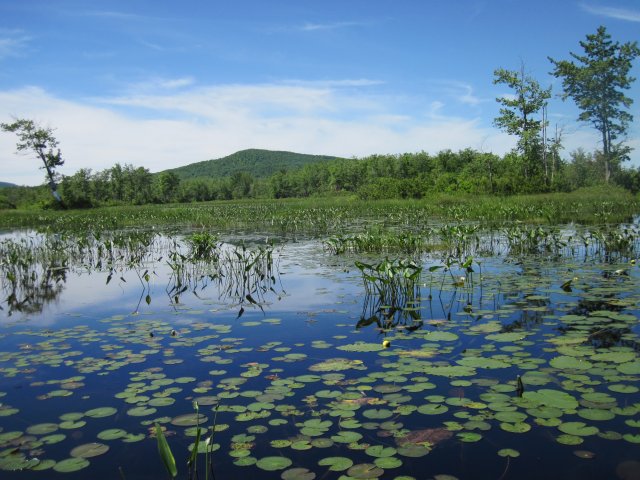Armed to Secure Wetlands: New Hampshire's Aquatic Resource Mitigation (ARM) Fund

To comply with Section 404 of the Clean Water Act, the state of New Hampshire and the New England District of the U.S. Army Corps of Engineers require compensatory mitigation for projects impacting 10,000 square feet or more of wetlands. The Aquatic Resource Mitigation (NH ARM) Fund in New Hampshire is an in-lieu-fee (ILF) program, which is similar to a mitigation bank.
In an ILF program, project applicants pay a fee for unavoidable impacts to waters, including wetlands. Many applicants prefer mitigation banks and ILF options, like the NH ARM fund, because it speeds up the permitting process, allowing their project to get underway much quicker, and long-term monitoring or restoration projects are undertaken by a responsible third party. State and federal agencies often prefer ILF to permittee-responsible mitigation as well since they can help select more valuable and sustainable projects for mitigation within a watershed. Further, the land is owned or protected by land trusts or experienced non-profit organizations that have a mission of land stewardship (per federal rule only governmental organizations or non-profit groups can hold the monies from ILF payments).
In 2013, the New Hampshire Department of Environmental Services (NHDES) received a Wetland Program Development Grant (WPDG) to assist in program improvements to enhance the efficiency and consistency of the mitigation program review process, as well as for tracking the loss and gains to aquatic resources. NHDES created the tracking system that assesses and measures the specific wetland types that are lost to development and catalogs associated functions and values. Additionally, when NH ARM funds are awarded to the aforementioned land trusts or non-profits organizations, NHDES needs to fully assess the function and condition of the lands protected and wetlands restored to ensure that there is a match between the resources lost and gained. The WPDG has allowed the NH ARM Fund program to more effectively meet reporting requirements and provide more detail on the losses and gains to aquatic resources in the state.
Since its inception in 2007 through 2016, 136 permit applicants have utilized the NH ARM fund to support projects that restore, enhance and preserve aquatic resources and upland buffers. The NH ARM fund has conserved over 12,000 acres of land, restored 100 acres of wetland and improved over 45 miles of streams. Nearly $14 million have been collected since the program was established. In 2016, 17 permits involving an ILF payment were issued, collecting $3 million in payments and $3.3 million in matched leverage funds. These funds were used to restore a salt marsh (through a living shoreline concept), restore five acres of oyster reef, restore 11 acres of floodplain forest and preserve over 2,300 acres of land.
As shown with New Hampshire’s ARM Fund program, ILF programs are an extremely effective regulatory tool for protecting and restoring aquatic resources while allowing for the growth of the economy through development projects.
Learn more about what New Hampshire is doing to protect wetlands.
